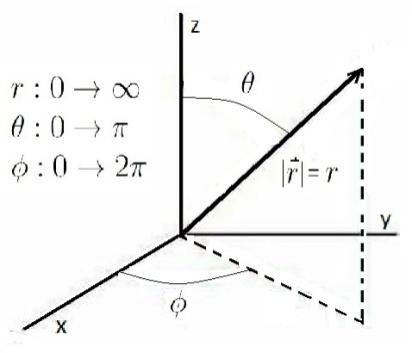Spherical Coordinates and the Lagrangian
Energy:
NB: what depends on time? all 3!

Recall steps to solve Lagrangian (5)
- Find T
- Find U
- “Calculate” L = T-U
- Euler-Lagrange equation
- Solve resulting diff eq.
Examples:
Harmonic Oscillator Setup: wall with spring, mass attached to spring position is defined as Equilibrium length of spring is with spring constant
Usually pick that is 0 and start measurements from that point. This is different
Do Euler-Lagrange
What we expect Solution:
or sin/cos depending on your preference Harmonic Oscillator + Gravity Vertically hanging harmonic oscillator
Be careful how you define positive and negative
Newtonian and Lagrangian mechanics are Consider newtons second law
The general kinetic energy is given by
Now lets take the time derivative of the velocity derivative
We now have the time derivative of the velocity derivative equal to force
Assuming conservative force
So each component is equal to
And now we rewrite newtons second law:
Generalized:
This leads us to the Euler-Lagrange equation. Cool We can say they are equivalent for the cases when the kinetic energy is independent of position. and when the potential energy is independent of velocity() So gives us the same answer More explicitly:
Example Pendulum
Pendulum with length , mass and displacement angle Use polar coordinates! Only one Equation of motion vs 2
Solving using small angle approximation
Calculus of Variations
Based on Hamilton’s principle of least action Consider a dynamical system that moves from point 1 to point 2 within a specified time interval, . System goes from 1 2 in time
In all of the paths along which that dynamical system will move along, the actual path which is followed is the one that minimizes the action.
What the hell does that mean? “The action” The combination of kinetic and potential energies, aka the Lagrangian
Hacky sack! Point 1 is Prof. martin’s hand. Point 2 is Nate’s hand. There are an infinite number of paths between these two points, but the minimum action path is taken by the object.
This is the time integral of the Lagrangian
This is also used in quantum physics.
The mathematical foundation of Lagrange’s equation is the extremum principle
This is calculus of variations
Given a function , to find an extremum of we look to see where the first derivative vanishes
Now, we instead want to find the extremum of the integral
Rewrite y:
When
This is the function that minimizes J Constraints has a continuous first derivative that vanishes at bounds .
So
With these requirements
Take derivatives
Now lets use integration by parts for the second term
middle term is 0
Euler Lagrange equation comes from calculus of variations For non-trivial equations (aka ) we find
Euler Lagrange equation!